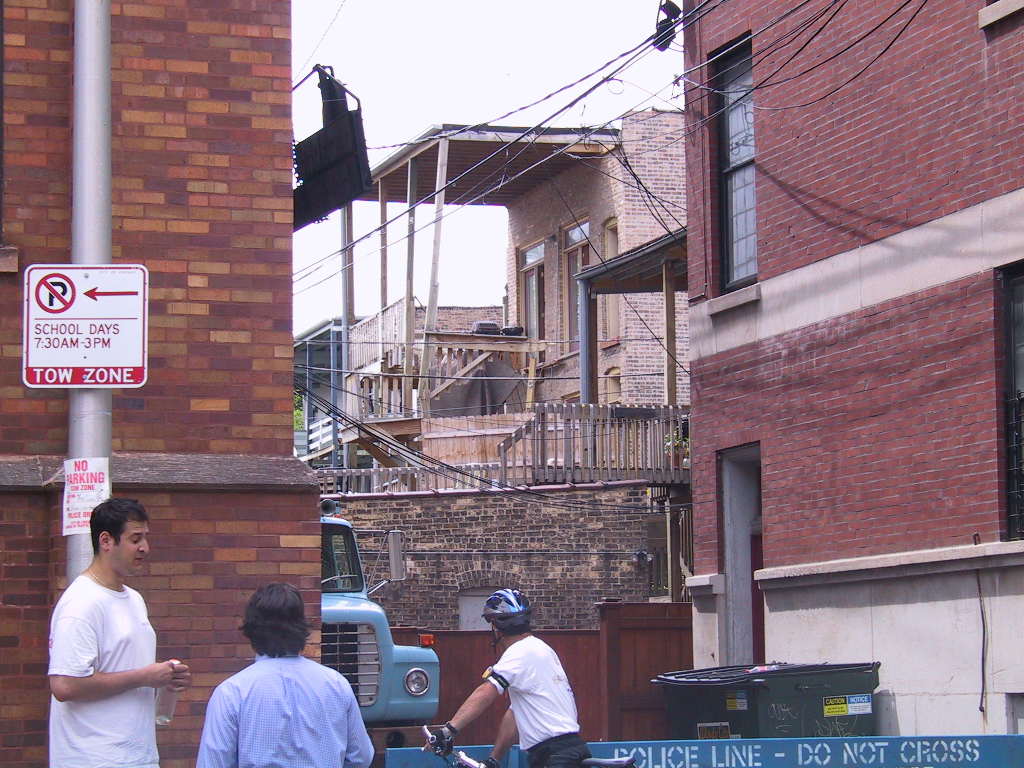Chicago Balcony Collapse
Lessons in Structural Safety and Compliance
📅 Date & Time:
June 29, 2003, Shortly After Midnight
📍 Location:
713 W. Wrightwood Avenue, Lincoln Park, Chicago, Illinois
Incident Overview
On the night of June 29, 2003, tragedy unfolded in Chicago’s Lincoln Park neighborhood when a three-story wooden balcony collapsed during a party, resulting in the deaths of 13 individuals and injuring 57 others. This catastrophic event remains the deadliest porch collapse in U.S. history, exposing critical flaws in construction practices, building codes, and the importance of regular balcony inspections.
Casualties & Injuries
Fatalities
13 individuals lost their lives, either at the scene or shortly after being transported to hospitals.
Injuries
57 others sustained varying degrees of injuries, from minor cuts to life-threatening conditions, including traumatic brain injuries and fractures.
Long-Term Impact
Survivors reported lasting physical and psychological effects, including post-traumatic stress disorder (PTSD).
Eyewitness Accounts
“We were standing there talking, and the next thing I remember, I was in a pile of people. It felt like the floor just disappeared.” — Survivor Testimony
Another attendee recalled hearing creaking and cracking noises moments before the collapse. Despite warning others about the potential instability, the warnings went unheeded.
Investigating the Causes of the Collapse
Building Code Violations
The porch failed to meet Chicago’s building code requirements, with deficiencies in load-bearing capacity and structural reinforcements.
Substandard Materials
Low-quality wood and fasteners contributed to the failure, making the structure vulnerable under stress.
Overcrowding
Although overcrowding was a factor, the primary cause was the porch’s inability to support even a moderately large group due to poor construction.
How This Tragedy Changed Building Safety Regulations
The Chicago balcony collapse became a turning point for building safety not just in Chicago, but nationwide. It prompted a reevaluation of balcony inspection laws, construction codes, and safety protocols.
- Citywide Balcony Inspections: Chicago launched an immediate inspection program, identifying over 1,260 unsafe porches across the city.
- Stricter Building Codes: New codes mandated stronger materials, better structural reinforcements, and more rigorous design standards.
- Mandatory Inspections: Routine balcony inspections became mandatory for multi-story residential buildings.
- Increased Awareness: The tragedy raised public awareness about the importance of balcony maintenance and compliance with safety regulations.
Don’t Wait for a Tragedy

The Chicago balcony collapse serves as a stark reminder of the catastrophic consequences of neglecting building safety. Whether you’re a property owner, tenant, or contractor, staying proactive about balcony inspections can save lives.
At DrBalcony, we specialize in balcony inspections and structural evaluations to prevent disasters like the Chicago collapse. Our team of certified engineers and inspectors ensures your property meets state and city safety codes, offering peace of mind for residents and property owners.
Contact Us Easily
Join Drbalcony for better experience of Inspection
